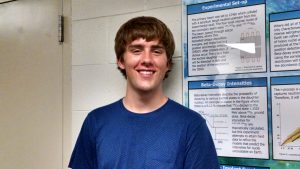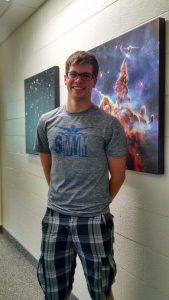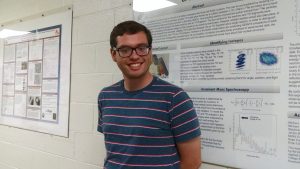 Crystalline Channeling of MeV Ion Beams
Crystalline Channeling of MeV Ion Beams
Research Advisor: Dr.Stephen Remillard
Thin films of strontium titanate (SrTiO3) on single crystal magnesium oxide (MgO) substrate and strontium manganate (SrMnO3) also on single crystal MgO substrate are being considered for use in engineered superlattices. These superlattice structures exhibit unique properties which make them valuable in the semiconductor industry as well as applications which require a high sheering resistance. Crystal matching of the films to the substrates, which is essential for a low defect density, is indicated by effective channeling of ion beams through the lattice. Ion beam channeling, which occurs when the beam’s incidence angle is parallel to crystal planes, can occur in well-ordered and pure crystals. With the addition of the ability to control the azimuthal angle as well as the altitudinal angle, two dimensional rastering of the incident angle is achieved. Comparison of the backscattering yields at different incident altitudinal and azimuthal angles shows a drop in yield as the channeling angle is approached. Channeling is seen in both the bulk SrTiO3 and MgO samples, although the yield suppression revealed structure around normal incidence. This structure is observed to be consistent between two MgO samples obtained from different suppliers and has different spacing in peaks than the SrTiO3 sample.
This research was supported in part by an award to Hope College from the Howard Hughes Medical Institute through the Undergraduate Science Education Program and by the Hope College Department of Physics.





